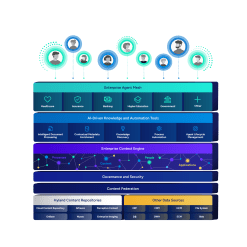7 questions to ask when building a successful cloud enablement strategy
While the cloud enablement process is multifaceted, here are a few questions to consider as your start developing your cloud enablement strategy:
1. What are your organization’s goals?
Align your cloud enablement strategy to those goals to take a holistic and strategic approach, rather than a tactical one.
2. What is the current status of your IT infrastructure?
In addition to customer-facing platforms, consider your employee-facing platforms, hardware and software. Know how all legacy systems and technology will be impacted and whether you need any upgrades to be cloud-ready.
3. What are your cloud options?
Review what cloud-based platforms and applications can provide, as well as how they can integrate with one another and existing on-premises solutions, so you can prioritize your efforts based on your organization’s goals.
4. What are your security and compliance needs?
Know how a shift to the cloud might impact your security and compliance requirements and if your cloud vendor has experience supporting those efforts. This can also help determine if you need a public, private, hybrid or multicloud environment.
5. What internal resources do you have?
If you don’t have the internal resources or expertise to execute on your cloud priorities, evaluate a partner to support your cloud enablement.
6. What is your anticipated ROI?
This is another key element — especially in earning a “yes” response to question seven. Many cloud vendor partners, like Hyland, can provide both ROI and actionable data. You might consider how your budget will be impacted as the cloud often shifts capital expenditures to operating expenses, making it easier to plan for.
7. Do you have leadership buy-in?
This is necessary. If you’re struggling to address questions or common objections, view our guide about how to build your business case for the cloud and effectively respond.













